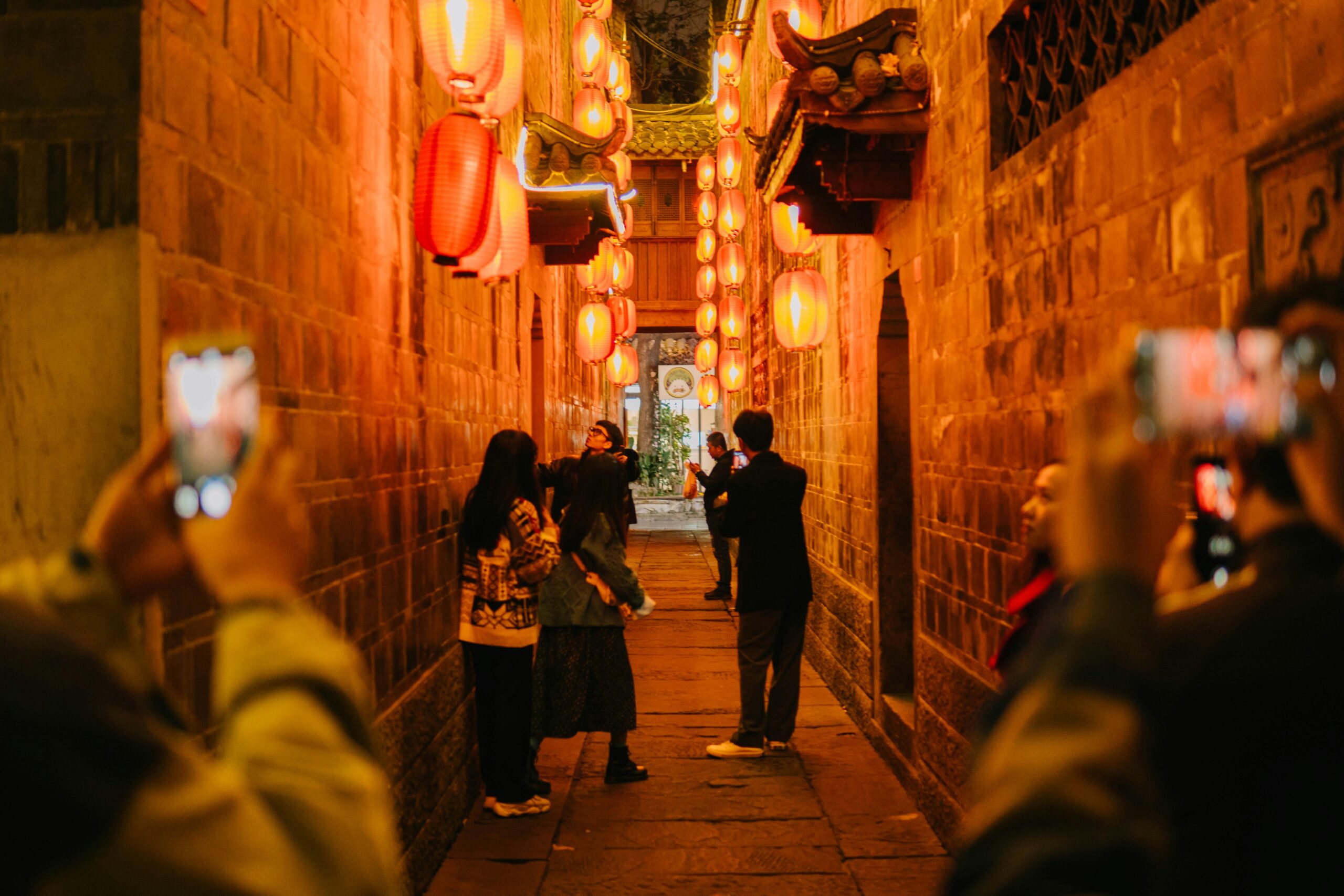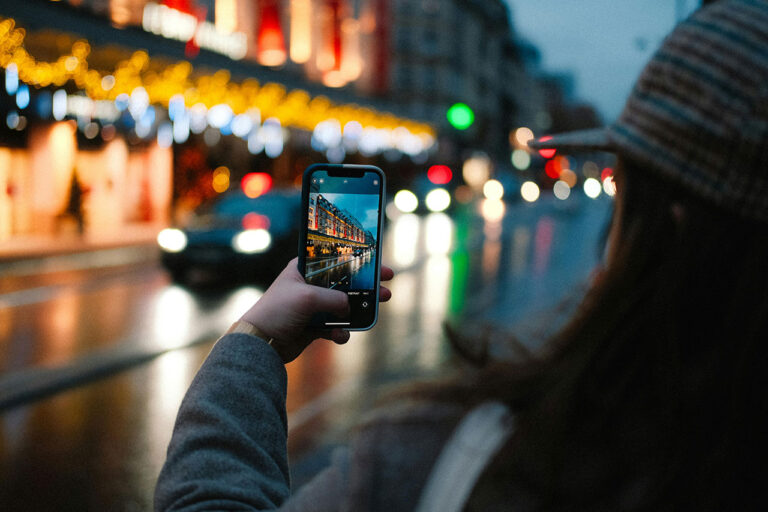Introduction:
Did you know that 92% of global travellers say they regularly use their smartphones as their primary travel camera? And why not! I’ve been amazed at how smartphone cameras have evolved – the iPhone 15 Pro Max can even shoot in 48MP RAW format! Whether you’re planning your next adventure or simply want to level up your travel photography game, this comprehensive guide will transform your smartphone into a powerful creative tool. From composition secrets to post-processing wizardry, we’ll explore everything you need to know to capture those unforgettable moments!
Table of Contents
Essential Smartphone Camera Settings for Travel
- Essential Smartphone Camera Settings for Travel Your smartphone’s camera is more powerful than you might realize! The key to capturing stunning travel photos lies in understanding and mastering your device’s settings. While automatic mode can be convenient, diving into your camera’s professional features will open up a world of creative possibilities.
Key Settings to Master:
- RAW Format: Enable this for maximum editing flexibility
- Pros: Better dynamic range and white balance control
- Cons: Larger file sizes, requires more storage
- Resolution Settings:
- Use highest resolution for landmark shots
- Consider medium resolution for casual shots to save space
- Switch to lower resolution for social media-only content
Advanced Camera Controls:
- Manual Mode Features:
- ISO control (100-3200 range typically)
- Shutter speed adjustment
- White balance settings
- Focus point selection
- Quick Launch Tips:
- Double-tap power button shortcut
- Lock screen camera access
- Custom gesture settings
Storage Management Strategy:
- Cloud backup solutions
- Portable SSD recommendations
- File organization systems
- In-field backup workflows
Composition Techniques That Make Your Travel Photos Pop
Great travel photography isn’t just about capturing what you see – it’s about creating visual stories that transport viewers to your destination. Understanding and applying fundamental composition techniques will dramatically improve your travel photos, regardless of your smartphone model.
Essential Composition Elements:
- Rule of Thirds Implementation:
- Enable grid overlay in camera settings
- Place key subjects at intersection points
- Use for horizon placement in landscapes
- Leading Lines:
- Roads and paths
- Architectural features
- Natural patterns
- Railway tracks
- Staircases
Advanced Composition Tips:
- Creating Depth:
- Use foreground elements like flowers or rocks
- Frame with archways or windows
- Layer multiple elements (foreground, middle, background)
- People in Landscapes:
- Add scale to massive scenes
- Create emotional connection
- Tell better travel stories
Must-Have Apps & Tools for Travel Photography
The right apps and accessories can transform your smartphone into a professional-grade camera setup. While your default camera app is great for quick shots, specialized apps provide additional features that can elevate your photography to the next level.
Essential Apps Breakdown:
- Editing Apps:
- Snapseed (free, professional-grade tools)
- Lightroom Mobile (advanced color control)
- VSCO (artistic filters and community)
- TouchRetouch (remove unwanted elements)
- Planning Apps:
- PhotoPills (sun/moon position planning)
- Maps.me (offline location scouting)
- AccuWeather (detailed forecast for shoots)
Must-Have Accessories:
- Stabilization:
- Compact tripod options
- Gimbal recommendations
- Hand straps for security
- Lighting:
- Portable LED panels
- Collapsible reflectors
- External flash options
Location-Specific Photography Tips
Different travel locations present unique challenges and opportunities. Understanding how to adapt your smartphone photography techniques to various environments will help you capture compelling images anywhere.
Urban Photography:
- City Architecture:
- Best times to shoot buildings
- Dealing with crowds
- Finding unique angles
- Street Photography:
- Candid capture techniques
- Legal considerations by country
- Street portrait approaches
Nature and Landscape Tips:
- Mountains and Forests:
- Capturing scale
- Weather challenges
- Best times for shooting
- Beaches and Water:
- Protecting your phone
- Capturing motion
- Dealing with bright conditions
Advanced Smartphone Camera Techniques
Modern smartphones are capable of creative techniques that were once exclusive to DSLR cameras. Learning these advanced methods will help you create unique and eye-catching travel images.
Long Exposure Effects:
- Waterfalls and Rivers:
- App recommendations
- Stabilization requirements
- Best conditions
- Light Trails:
- City traffic shots
- Carnival rides
- Star trails
Creative Techniques:
- Panorama Mastery:
- Vertical panoramas
- Tiny planet effects
- Multi-row panoramas
- Time-Lapse Creation:
- Interval settings
- Subject selection
- Storage requirements
Post-Processing Tips for Travel
Photos Post-processing is where good photos become great. Learning to edit effectively while maintaining authenticity is crucial for travel photography.
Basic Adjustments Workflow:
- Essential Edits:
- Exposure compensation
- Color temperature
- Shadow recovery
- Highlight protection
- Advanced Techniques:
- Selective adjustments
- Color grading
- Local contrast
- Perspective correction
Creating Your Style:
- Develop a consistent editing approach
- Build custom presets
- Maintain authenticity in edits
- Batch processing workflows
Conclusion:
Gone are the days when you needed bulky camera gear to capture professional-looking travel photos! With these smartphone photography techniques and a creative eye, you’re ready to document your adventures in stunning detail. Remember, the best camera is the one you have with you – and your smartphone is more capable than you might think. Start practicing these tips before your next trip, and don’t forget to experiment with different techniques. Happy shooting!


